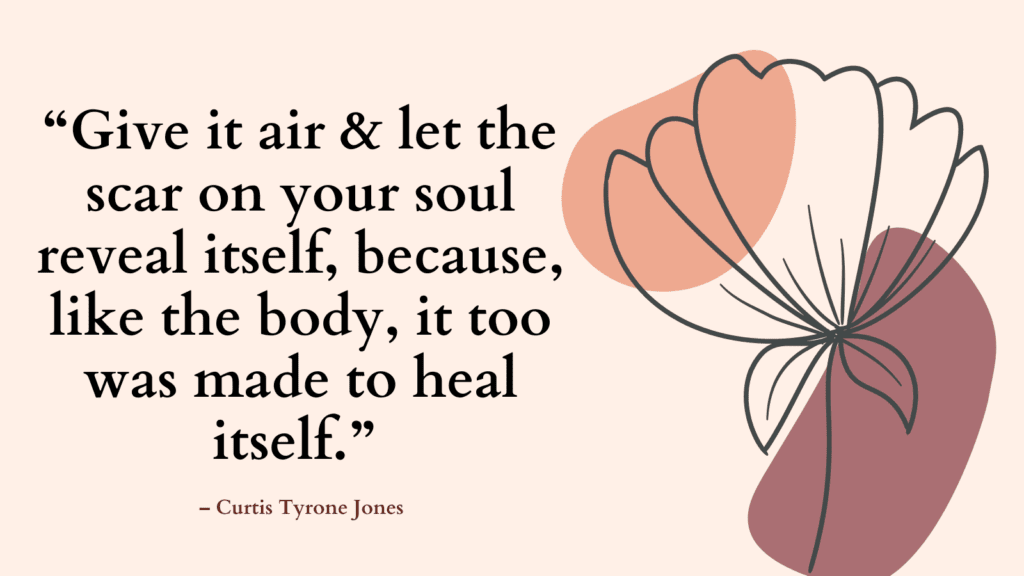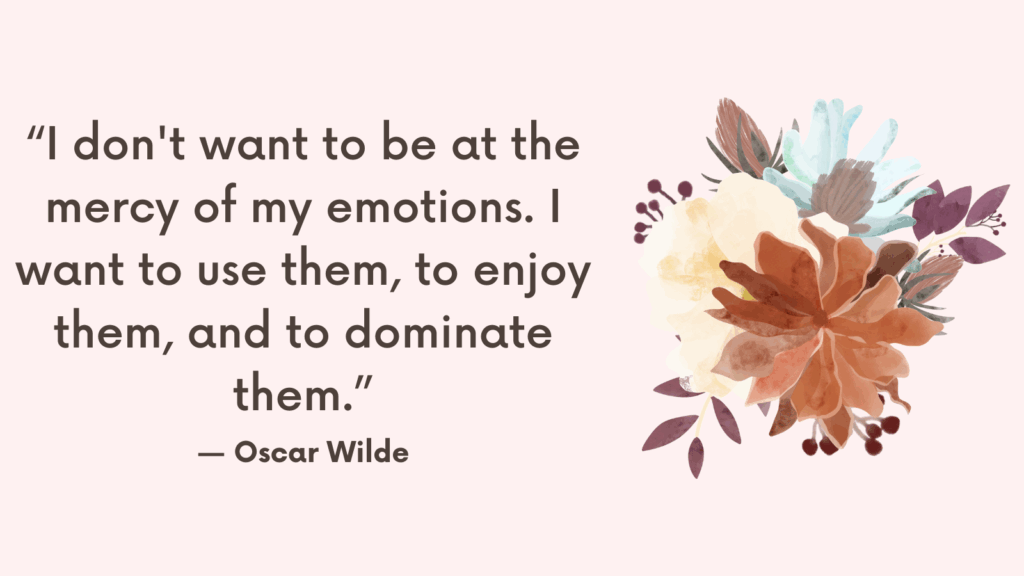In this post, you’ll learn the difference between impulsive and intrusive thoughts and how to manage them.
What Are Impulsive Thoughts?
Impulsive thoughts are sudden and unexpected thoughts or urges that can lead to impulsive actions without proper consideration of the consequences.
These thoughts can arise from various sources such as stress, anxiety, or excitement, and can be triggered by external stimuli or internal feelings.
Impulsive thoughts can range from harmless distractions to dangerous behaviors, and it’s important to learn how to manage them effectively to prevent negative outcomes.
What Are Intrusive Thoughts?
Intrusive thoughts are unwanted, involuntary thoughts, images, or impulses that are usually distressing and difficult to manage.
They can take the form of violent or taboo thoughts, obsessive worries, or even fantasies.
These thoughts can be experienced by anyone, but they are often associated with mental health conditions such as anxiety, depression, post-traumatic stress disorder (PTSD), and obsessive-compulsive disorder (OCD).
Intrusive thoughts are not reflective of a person’s true character or values, but they can cause extreme distress and interfere with daily functioning.
Related: How To Do Thought Work In 3 Simple Steps
Impulsive Vs Intrusive Thoughts
Impulsive thoughts and intrusive thoughts are two types of thoughts that can cause distress to individuals.
Impulsive thoughts refer to sudden, unplanned thoughts that occur in response to a stimulus or trigger.
These thoughts can lead to impulsive behaviors that may not be in line with an individual’s values or goals.
For example, a person may impulsively buy something they cannot afford just because they saw it on sale.
On the other hand, intrusive thoughts are repetitive, unwanted thoughts that are often disturbing and difficult to control.
They can come out of nowhere and cause significant distress, anxiety, and shame.
While everyone experiences impulsive and intrusive thoughts occasionally, they can become problematic when they interfere with daily functioning or cause significant distress.
Related: How To Stop Self-Critical Thoughts Using These Top 10 Techniques
Differences Between Impulsive And Intrusive Thoughts
1. Source of Trigger
Impulsive thoughts are usually triggered by a strong emotion or desire, and they often involve impulsive behavior or decision-making.
For example, if you are hungry and see a cake in front of you, an impulsive thought might be to grab the cake and eat it immediately without considering the consequences.
Intrusive thoughts, on the other hand, are unwanted and often disturbing thoughts that enter the mind without any apparent trigger.
They can be repetitive and difficult to ignore, and they may cause anxiety or distress.
Examples of intrusive thoughts include obsessive worrying about safety or cleanliness, or intrusive images or thoughts related to violence or harm.
While impulsive thoughts are typically triggered by a particular stimulus or situation, intrusive thoughts can seemingly come out of nowhere and can be persistent and distressing.
Related: How To Support A Friend With OCD? 7 Practical Ways You Can Help Someone With OCD
2. Duration
In terms of duration, impulsive thoughts tend to be shorter and fleeting.
They often come and go quickly, without lingering for very long.
On the other hand, intrusive thoughts can be persistent and recurring. They may keep coming back, sometimes even for years.
3. Frequency
In terms of frequency, impulsive thoughts tend to occur less frequently than intrusive thoughts.
Impulsive thoughts are often triggered by a specific event or situation, whereas intrusive thoughts can occur at any time, seemingly out of nowhere.
Related: How To Let Go Of OCD? Top 6 Powerful Strategies to Treat OCD Using CBT (+FREE OCD Resources)
4. Level Of Control
Impulsive thoughts are thoughts or ideas that arise suddenly and without warning.
People who experience impulsive thoughts often feel like they are not in control of their own mind.
However, with effort and practice, it is possible to learn to control these thoughts.
On the other hand, intrusive thoughts are thoughts that keep coming back even when the person does not want them.
These thoughts can also be disturbing, scary, or unwanted.
People who experience intrusive thoughts often feel guilty or ashamed about them.
However, it is important to remember that having intrusive thoughts is not a reflection of one’s character or morality.
With therapy and support, it is possible to learn how to manage these thoughts and reduce their impact on daily life.
Related: Best 10 Intrusive Thoughts Books

How to Manage Impulsive Thoughts?
Managing impulsive thoughts can be challenging, but there are several strategies that can help:
1. Recognize and label impulsive thoughts
The first step is to become aware of impulsive thoughts as they arise.
Once you recognize them, label them as impulsive and acknowledge that they are not necessarily reflective of reality.
2. Practice mindfulness
Mindfulness can help you manage impulsive thoughts by allowing you to observe your thoughts without judgment or attachment.
When impulsive thoughts arise, gently refocus your attention on your breath, body sensations, or the present moment.
Related: Best 6 Mindfulness Exercises For Beginners (+FREE Resources)
3. Delay your response
If possible, delay your response to impulsive thoughts. Take a deep breath and count to ten before acting on the thought.
This can give you time to consider other options or consequences.
4. Consider the consequences
Before acting on an impulsive thought, take a moment to consider the potential consequences.
Will this action have a negative impact on yourself or others? If so, try to choose a different course of action.
Regular practice of these relaxation techniques can help you calm your mind and reduce impulsivity.
How to Manage Intrusive Thoughts?
Intrusive thoughts can be difficult to manage, but there are several ways to cope with them:
1. Acknowledge and accept the thoughts
Resisting or trying to suppress intrusive thoughts can increase their power.
Instead, acknowledge them as they come and try not to give them too much attention.
Related: Impulsivity Test: Am I Impulsive?
2. Challenge the thoughts
Ask yourself if the thought is logical or realistic.
Often, intrusive thoughts are exaggerations or completely unfounded, so challenging them with evidence-based reasoning can help diminish their power.
Here are some prompts that you can use to challenge intrusive thoughts:
1. What evidence is there that this thought is true?
2. What is the worst thing that could happen if I don’t act on this thought?
3. How likely is it that this thought will actually happen?
4. What would I say to a friend who had this same thought?
5. How has this thought impacted my life in the past?
6. Is there an alternative explanation for this situation?
7. What other possible outcomes could happen aside from the negative one I am imagining?
8. How would my life look different if I didn’t listen to this thought?
9. What small steps can I take to challenge and overcome this thought?
10. What would it feel like to let go of this thought and believe something different?
Remember to be gentle with yourself and allow yourself time to reflect and process your thoughts.
Writing down your responses to these prompts can help you gain clarity and perspective on your intrusive thoughts.
Related: What Causes Cognitive Distortions? (+Top 10 Common Cognitive Distortions & How To Challenge Them)
3. Redirect your focus
Engage in an activity that requires your attention, such as exercise, reading, or socializing.
This can help distract you from your thoughts and give you a break from them.
4. Practice mindfulness
Mindfulness practice is a way of training your mind to focus on the present moment, without judgment.
It involves paying attention to your thoughts and feelings as they arise, observing them without trying to change or control them.
Mindfulness can help reduce stress, anxiety, and negative thought patterns.
There are many ways to practice mindfulness, such as meditation, breathing exercises, and mindful movement like yoga or walking.
The key is to make it a daily habit and be patient with yourself as you learn to develop this skill.
Here’s a simple mindfulness exercise that you can try:
- Find a quiet and comfortable place where you won’t be disturbed for a few minutes.
- Sit down with your back straight, your feet flat on the ground, and your hands resting comfortably in your lap.
- Take a few deep breaths and close your eyes.
- Begin by bringing your attention to your breath. Notice the sensation of the air entering and leaving your body.
- If you notice that your mind has wandered off, simply bring your attention back to your breath without judgment.
- Next, start becoming aware of the different sounds around you. Listen to each sound carefully without trying to identify it or label it as good or bad.
- Now, shift your focus to your body. Scan your body from head to toe, noticing any sensations or feelings you may be experiencing.
- Finally, bring your attention back to your breath and take a few deep breaths before opening your eyes.
Remember, mindfulness takes practice, so don’t worry if your mind wanders during the exercise.
Simply acknowledge it and gently bring your attention back to the present moment.
Related: Best 8 Mindfulness Exercises For Adults That Will Help You Regulate Your Emotions

Conclusion
Impulsive and intrusive thoughts refer to sudden and unwelcome ideas, urges or images that come to mind and disrupt a person’s train of thought.
These thoughts can be distressing, embarrassing, or even alarming, as they often involve taboo or forbidden topics that go against a person’s moral or ethical values.
While these thoughts are common and normal to some extent, individuals who experience them more frequently or intensely may be diagnosed with conditions such as obsessive-compulsive disorder (OCD) or post-traumatic stress disorder (PTSD).
Nonetheless, therapy and medication can help mitigate the impact of impulsive and intrusive thoughts and improve a person’s quality of life.



